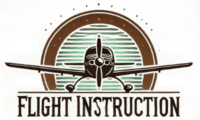No pilot plans for an emergency landing, but every good pilot prepares for one. Whether you’re flying over mountains, deserts, or remote wilderness, being equipped for survival after an emergency landing is just as important as pre-flight planning. This is a lesson I learned from John Reeside, a man whose life experience, both in aviation and beyond, shaped my understanding of responsibility and preparedness as a pilot.
Lessons Learned from John Reeside
I met John Reeside, an ATP-rated pilot, former special forces operator, and CFI, in 2015 at Santa Barbara Airport (SBA). My English carried a Polish accent, but John—fluent in several languages—struck up a conversation with me in Russian. That simple moment sparked a connection that led to countless cross-country flights together and an invaluable education in aviation preparedness.
John’s military background shaped his meticulous approach to survival planning. He told me stories that emphasized why it’s crucial to be ready for anything. I’ll never forget one of his accounts:
I declared an emergency, and the ATC replied, ‘You’re number three.’
From John, I learned not just the importance of declaring an emergency but also what to do after the landing. His philosophy was simple: surviving the flight is only half the battle; you need to survive on the ground, too.
Essential Survival Kit for Cross-Country Flights
John always carried a dedicated survival bag for every cross-country flight. It became a habit I adopted as well. Whether you’re flying a Cirrus SR or SF equipped with CAPS, or any other general aviation aircraft, you need to be ready for the unexpected. Even with CAPS, you still need to survive after a safe landing. Help might not arrive immediately—it could be night, your ELT might fail, or you could be in a location with limited access.
Here’s what John taught me to pack:
1. Clothing and Shelter
• Warm jacket or blanket: Hypothermia can set in quickly, especially at night or in mountainous areas.
• Emergency bivy sack or space blanket: Compact and designed to retain body heat.
• Gloves and hat: Small items that can make a huge difference in keeping you warm.
2. Water and Hydration
• Collapsible water container or hydration bladder: A reliable way to store and carry water.
• Water purification tablets or a filtration straw: Clean water is essential, especially if you’re stranded for days.
3. Fire and Light
• Firestarter kit: Opt for a ferrocerium rod instead of a magnesium fire starter. Magnesium bars tend to lose their flint quickly, often within a week of regular use. A long, thick ferrocerium rod is more reliable and durable. Practice using it before you need it in a real survival situation.
• Tinder: Carry cotton balls soaked in petroleum jelly (Vaseline) in a sealed plastic bag. They’re lightweight, waterproof, and one of the most effective fire-starting materials, even in damp conditions.
• Headlamp and spare batteries: Keeping your hands free is vital when setting up shelter, gathering materials, or signaling for help.
John always emphasized that fire is more than just warmth—it’s about morale, signaling for rescue, and keeping predators at bay.
Being prepared with the right tools can make all the difference in a survival scenario.
4. Tools and Equipment
• A good, sharp knife: Versatile for cutting rope, preparing food, or even self-defense.
• Multi-tool: Includes pliers, screwdrivers, and other essential tools.
• Paracord: Useful for building shelter, securing items, or making traps.
5. Food
• High-calorie energy bars or freeze-dried meals: Lightweight and long-lasting.
• Trail mix or nuts: Easy to carry and packed with nutrients.
6. Navigation and Communication
• Portable GPS or satellite communicator: Even if your ELT fails, these devices can help you get help or navigate to safety.
• Whistle and signal mirror: Effective tools for signaling rescue teams during the day.
7. First Aid Kit
• Include basic items like bandages, antiseptic wipes, pain relievers, and any personal medications.
Flying Cirrus with CAPS? Be Prepared for the Ground
As a Cirrus pilot, I appreciate the safety offered by the Cirrus Airframe Parachute System (CAPS), but even with CAPS, a safe descent doesn’t guarantee immediate rescue. Landing safely in a remote area means you may need to wait hours—or even days—for help to arrive.
Consider scenarios like:
• Night landings: Reduced visibility makes it harder for rescuers to find you.
• ELT failure: If your Emergency Locator Transmitter doesn’t activate, search teams might not know where you are.
• Challenging terrain: Dense forests, mountains, or deserts can delay rescue operations.
My First Cross-Country Flights with John
Flying with John was always an education. Before every flight, he meticulously checked his survival bag, ensuring everything was in place. One story he shared left a lasting impression:
The first time I landed on an aircraft carrier, the crew gave me this belt, he said, holding up a belt with a buckle engraved with the name of their crew.
That belt symbolizes preparedness, precision, and the trust between a pilot and their team. To me, it’s a powerful reminder that being a pilot isn’t just about flying—it’s about being ready for whatever challenges come your way.
I’ll never forget one of our flights over remote terrain, where John’s meticulous preparation transformed what could have been a daunting journey into a confident, controlled experience. His approach taught me that being prepared is more than just a habit—it’s a mindset that defines a good pilot.
Survival Isn’t Optional
As a CFI, I now pass on these lessons to my students. John Reeside taught me that responsibility doesn’t end when the plane lands—it continues until everyone is safe. Whether you’re a seasoned pilot or a student flying cross-country for the first time, take the time to pack a survival bag and plan for the unexpected.
Flying is a privilege, but it comes with responsibilities. Be prepared, stay safe, and always remember:
The best pilots are the ones who prepare for the worst while hoping for the best.
If you want to learn more about cross-country planning or flying with safety in mind, reach out. These lessons are as important as the flights themselves.


